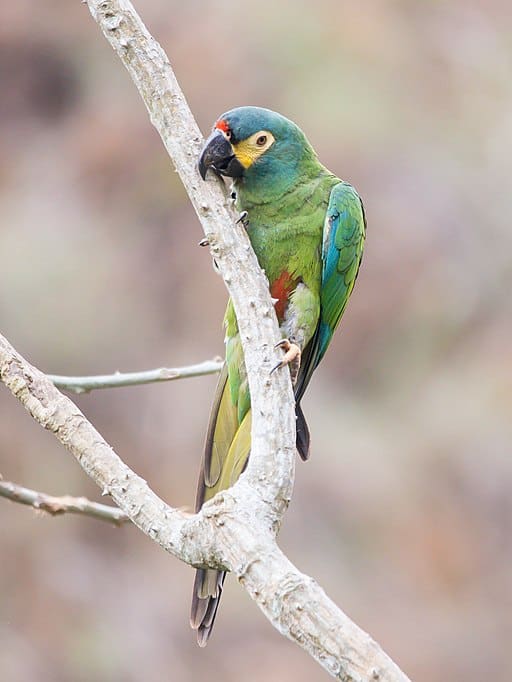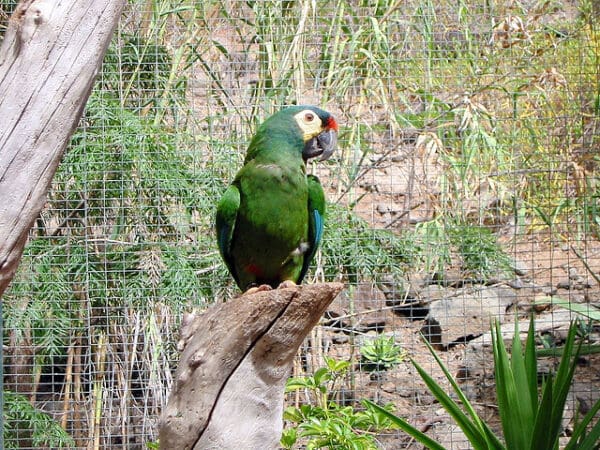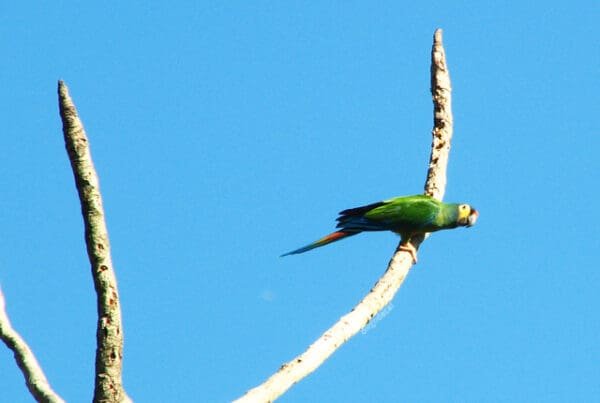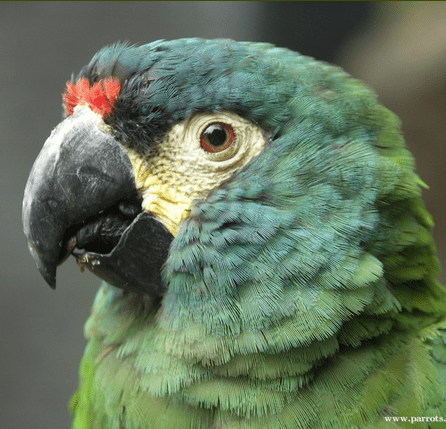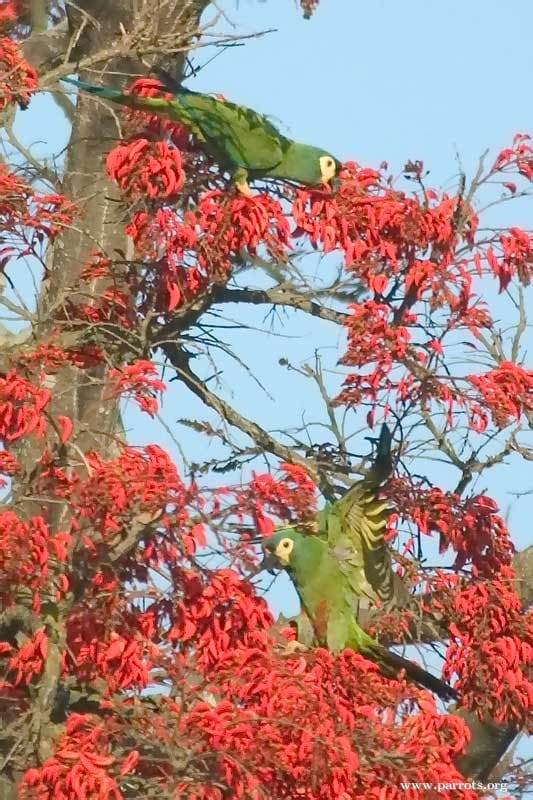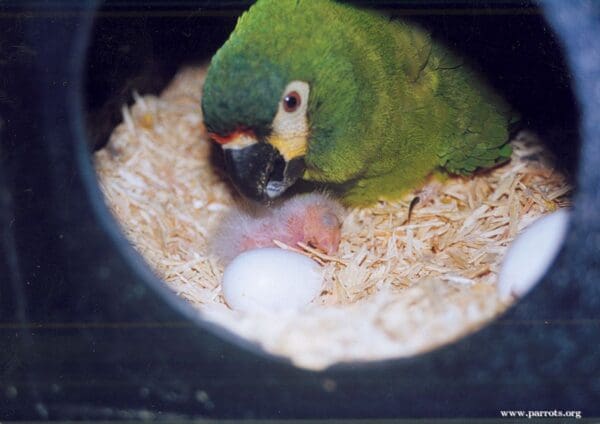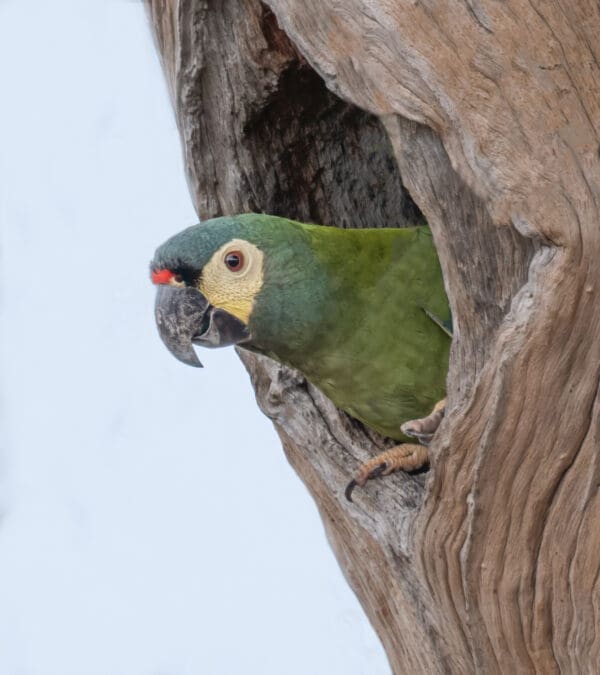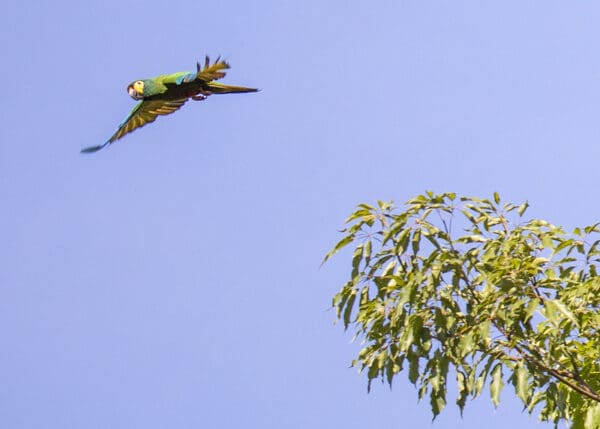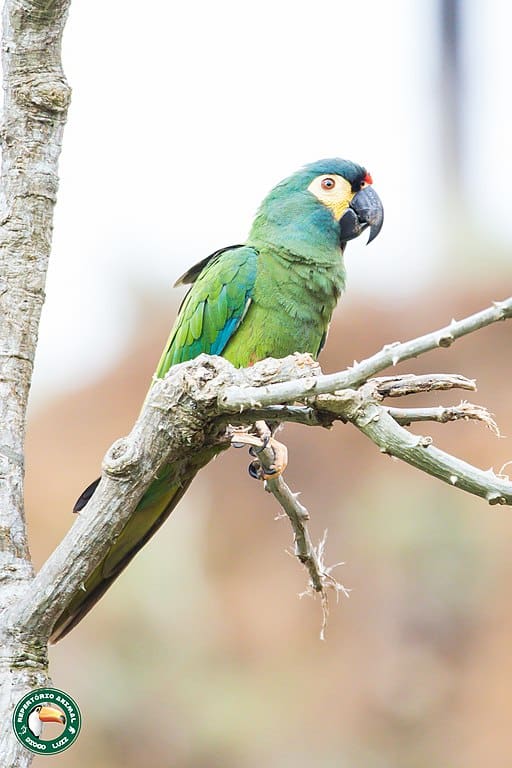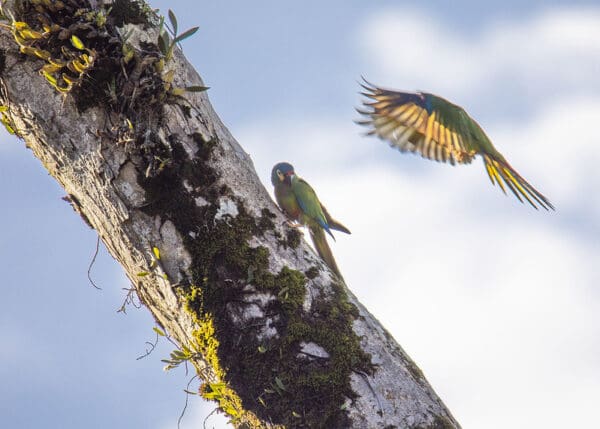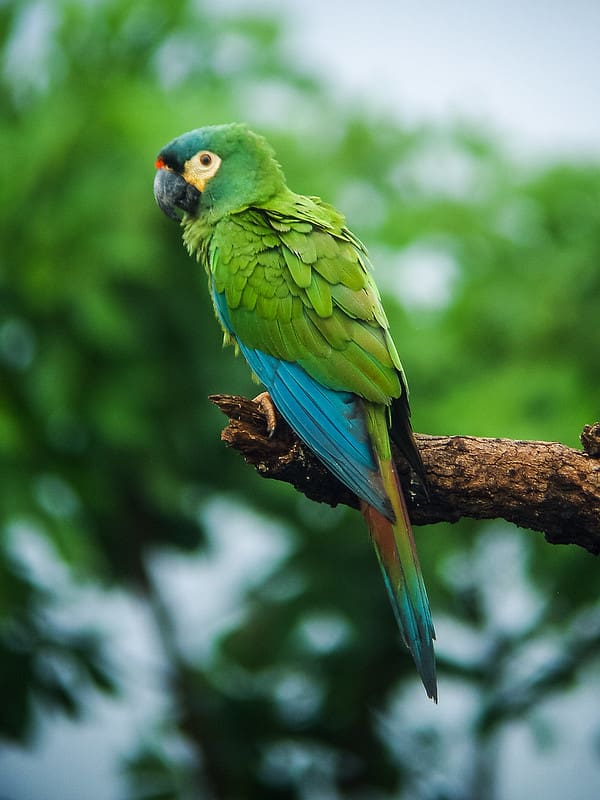Blue-winged Macaw
Also known as:
Illiger's Macaw
Also known as:
Illiger's Macaw
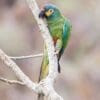
![© Sidnei Dantas [CC BY-SA 2.0] via Flickr Wild Blue-winged Macaws perch at a nest cavity](https://parrots.org/wp-content/uploads/2023/01/wpt_Blue-winged-Macaw_1303-11-100x100.jpg)
![© Joachim S. Mueller [CC BY-SA 2.0] via Flickr A companion Blue-winged Macaw perches in a large aviary](https://parrots.org/wp-content/uploads/2023/01/wpt_Blue-winged-Macaw_1303-10-100x100.jpg)
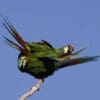
![© Diego Dacal (originally posted to Flickr as a maritaca) [CC BY-SA 2.0] via Wikimedia Commons A wild Blue-winged Macaw perches on a branch](https://parrots.org/wp-content/uploads/2023/01/wpt_Blue-winged-Macaw_1303-8-100x100.jpg)

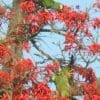
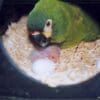
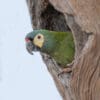
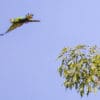
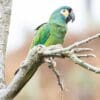

![© Nick Athanas [CC BY-NC-SA 2.0] via Flickr A wild Blue-winged Macaw perches on a limb](https://parrots.org/wp-content/uploads/2023/01/wpt_Blue-winged-Macaw_1303-12-100x100.jpg)
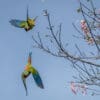
DID YOU KNOW?
Some wild Blue-winged Macaws have problems with cataracts when they age, which limits their ability to find food.

Primolius

maracana
Size:
43 cm (16.8 in)
Weight:
265 g (9.2 oz)
Subspecies including nominate:
one
Colour Adult:
Both adults: forehead red; crown, nape, and lower cheeks green/blue; red on low back and middle of abdomen; blue tail with red/brown around base. Beak black. Bare cere and face pale yellow. Eye orange.
Colour Juvenile:
Red forehead paler; red on abdomen and back tinged with yellow; tail shorter. Eye brown.
More Information:
Content Sources:
CITES
Avibase
BirdLife International
Cornell Lab of Ornithology/Birds of the World
A Guide to Parrots of the World, Juniper and Parr, 1998
Parrots: Status Survey and Conservation Plan 2000-2004, Snyder, McGowan, Gilardi and Grajal, 2000.
Parrots of the World, Forshaw and Cooper, 1989.
Parrots of the World, Forshaw, 2006.
Parrots in Aviculture, Low, 1992.
Captive Status:
Uncommon
Longevity:
50-60 yrs
Housing:
Should have access to large enclosure at least 15 m long for part of the year. If breeding, may be kept in suspended cage 3 m (9.8 ft) long. Keeping permanently indoors not recommended.
Diet:
Soaked or sprouted sunflower seed; walnuts, roasted peanuts, pecans, Brazil nuts, pine nuts; fresh corn or boiled maize; fruits such as: banana, orange and others if taken; small amounts of wholewheat bread, and complete kibble for macaws. If in tropical area palm fruits can be given.
Enrichment:
Love to climb and play. Provide lots of bird-safe chew toys of wood and vegetable tanned leather. Also provide safe branches to chew. Provide as much room for activity as possible.
Nest Box Size:
12″ x 12″ x 24″ (30.5 cm x 30.5 cm x 61 cm) vertical box.
Clutch Size:
3 or 4
Fledging Age:
8-10 weeks
Hatch Weight:
—
Peak Weight:
—
Weaning Weight:
—
World Population:
2500-10,000 individuals; moderately rapid decrease.
IUCN Red List Status:
Near Threatened
CITES Listing:
Appendix I
Threat Summary:
Not globally threatened. Has become difficult to find in its relatively large range. In São Paulo state, the species has its stronghold in and around Caetetus Ecological Station. Trapping for wild bird trade, habitat degradation and loss and persecution are all threats. Appears to be lost in SE part of range.
Range:
Found in E Brazil at Ilha da Marajo, Para, and southern Para and Maranhao south to Mato Grosso, Sao Paulo and formerly Rio Grande do Sul, and scattered through E Paraguay to NE Argentina.
Habitat:
Found up to 1000 m (3280 ft). Occurs in tropical and subtropical evergreen and deciduous forest, including Atlantic rainforest and cerrado savanna; prefers forest edge or areas close to water. In northern Bahia found in gallery woodland in caatinga zone.
Wild Diet:
Recorded taking flowers, and seeds of introduced species Melia azedarach in NE Brazil; other details on diet lacking.
Ecology and Behaviour:
Prefers to stay in one area, occurs in pairs or small groups; less conspicuous than larger macaws. Avoids flying across open country; preferring to instead fly amongst trees.
Clutch and Egg Size:
3 or 4 rounded eggs, 37 x 30 mm (1.4 x 1.2 in)
Breeding Season:
December in Brazil, February in Argentina. Nest is in tree cavity.
